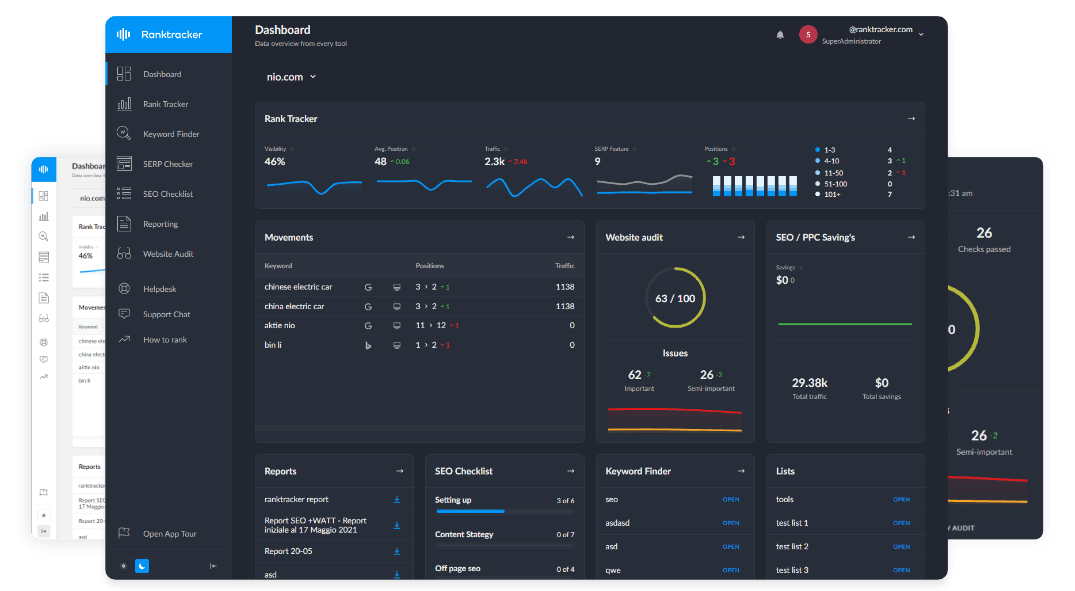Intro
SEO is a bit like the gym for your website: if you skip the basics, you’ll never see results. Many people talk about backlinks, complex strategies, or AI, but the truth is this—before all that, you need to work on your onsite SEO.
The good news? With a few simple and consistent optimizations, you can already boost your organic traffic in a sustainable way. Here are my 10 favorite onsite SEO tips, tested and proven in the field.
1. Craft Compelling Title Tags and Meta Descriptions
Each page should have a unique and catchy title, including the main keyword. Your meta description should make people want to click. Think of it like an ad: short, clear, and persuasive.
The title tag is your first impression in search results. It should be between 50-60 characters to avoid truncation. Naturally integrate your main keyword, preferably at the beginning, and add a differentiating element like your location or unique value proposition.
For meta descriptions, aim for 150-160 characters. Use active language, include a subtle call-to-action, and ensure it answers the user's search intent. Don't forget to include relevant secondary keywords.

👉 Example:
- Bad: Home Page – Welcome
- Better: SEO Consultant in Paris – Onsite Strategies to Boost Your Traffic
2. Optimize Your H1, H2, and H3 Tags
Heading tags are the backbone of your content. Use only one H1 per page, which serves as the main headline. H2s organize your sections, while H3s structure your subsections.
The All-in-One Platform for Effective SEO
Behind every successful business is a strong SEO campaign. But with countless optimization tools and techniques out there to choose from, it can be hard to know where to start. Well, fear no more, cause I've got just the thing to help. Presenting the Ranktracker all-in-one platform for effective SEO
We have finally opened registration to Ranktracker absolutely free!
Create a free accountOr Sign in using your credentials
Your H1 should echo the main idea of your title tag but can be slightly different to avoid over-optimization. It must contain your main keyword and set the tone for the content that follows.
H2s create a logical hierarchy and allow readers to quickly scan your content. Each H2 should introduce a new idea or major section. H3s serve to detail the points covered in H2s, creating an easily navigable tree structure.
This hierarchy not only helps Google understand your content but also improves user experience. Modern readers scan before reading in detail.
3. Write High-Quality Content (for Humans First)
Never forget: your content should answer a search intent. Think about your readers before the robots. Be clear, precise, and engaging, and integrate keywords naturally.
Quality content starts with thorough research into user intent. What is your audience really looking for? What questions are they asking? Analyze the results that already rank to understand expectations.
Structure your content with a compelling introduction that poses the problem, development that provides concrete solutions, and a conclusion that recaps key points. Use examples, data, and testimonials to reinforce your arguments.
The best SEO signal is a reader who stays until the end and interacts with your content.
4. Focus on UX and Readability
Onsite SEO isn't just about text. Short paragraphs, simple sentences, visuals to break things up, and subtle but effective calls-to-action make your content more digestible.
The All-in-One Platform for Effective SEO
Behind every successful business is a strong SEO campaign. But with countless optimization tools and techniques out there to choose from, it can be hard to know where to start. Well, fear no more, cause I've got just the thing to help. Presenting the Ranktracker all-in-one platform for effective SEO
We have finally opened registration to Ranktracker absolutely free!
Create a free accountOr Sign in using your credentials
User experience directly influences SEO. Content that's hard to read increases bounce rate, a negative signal for Google. Use bullet points, white space, and vary your sentence length.
Integrate relevant visual elements: infographics, screenshots, short videos. These elements break up text monotony and can significantly increase time spent on page.
The easier it is to read, the longer users will stay, and that's a positive signal for Google.
5. Optimize Your Images
Every image should be compressed for speed and have a descriptive ALT tag. For example, write "2015 Château Margaux red wine bottle" instead of "image1.jpg."
Image optimization goes beyond simple file size. Use modern formats like WebP when possible, and properly size your images to avoid browser-side resizing.
ALT tags should precisely describe the image content while naturally integrating relevant keywords. This is crucial for accessibility and SEO.
Don't forget file names: "seo-consultant-lyon.jpg" is much better than "IMG_1234.jpg." This small detail can make a difference, and don't forget that Google Images can be an underrated but highly qualified traffic source.
6. Improve Loading Speed
A slow site is like a waiter who takes 40 minutes to bring the appetizer: people leave. Enable caching, compress CSS and JavaScript files, and use a fast hosting provider.
Speed directly affects user experience and rankings. Use tools like PageSpeed Insights to identify issues. Optimize images, minify code, and leverage browser caching.
Consider a CDN (Content Delivery Network) to serve your content from servers close to your visitors. Every second saved can significantly improve your conversions.
Test your site with PageSpeed Insights: if you're in the red, both Google and your visitors will punish you.
7. Make Your Site Mobile-Friendly

Over 60% of traffic comes from mobile. Google now prioritizes mobile indexing, known as Mobile First Index. Check your site's compatibility and make sure it's fully responsive.
A responsive design is no longer enough: you need a truly optimized mobile experience. Buttons big enough for fingers, simplified navigation, loading times adapted to mobile connections.
Regularly test your site on different devices and screen sizes. Poor mobile experience can ruin all your other SEO efforts.
8. Master Internal Linking
Internal linking is the art of connecting your pages. The most important pages should receive the most internal links, and your anchor texts should be optimized but still natural.
Think of it as an internal GPS, guiding both Google and users to the places that matter most. Each internal link transfers authority and helps distribute "SEO juice" throughout your site.
Vary your link anchors, create coherent semantic cocoons, and don't hesitate to link to your important pages from multiple locations. A good internal linking strategy can transform orphaned pages into performing ones.
9. Build a Clear Site Architecture
A well-structured site ranks better. Keep navigation menus simple and logical. Use short, readable URLs, and make sure no page is more than three clicks away.
Architecture influences crawlability and user experience. Organize your content in logical categories, use breadcrumbs, and create an XML sitemap.
Clean URLs like "/seo-consultant-lyon" are preferable to "/page?id=123&cat=seo". Google loves clarity—and so do your visitors.
10. Track Performance and Adjust
SEO isn't a one-time thing. Use Google Search Console and Google Analytics to monitor results. Which keywords bring you the most traffic? Which pages perform best? Where do visitors drop off?
Regularly analyze your data: impressions, clicks, click-through rates, average positions. Identify improvement opportunities and content to prioritize for optimization.
Good onsite SEO is all about ongoing testing and learning. Test, measure, adjust, repeat.
Conclusion
Onsite SEO isn't rocket science, but it does require discipline and consistency. These 10 tips are your foundation. Once you've mastered them, you can move on to offsite SEO, backlinks, and more advanced strategies.
The All-in-One Platform for Effective SEO
Behind every successful business is a strong SEO campaign. But with countless optimization tools and techniques out there to choose from, it can be hard to know where to start. Well, fear no more, cause I've got just the thing to help. Presenting the Ranktracker all-in-one platform for effective SEO
We have finally opened registration to Ranktracker absolutely free!
Create a free accountOr Sign in using your credentials
👉 Start today by fixing your titles, structuring your content, and speeding up your site. You'll see: even without backlinks, your organic traffic can take off. 🚀
Author:
Paul Charbit - SEO Consultant

